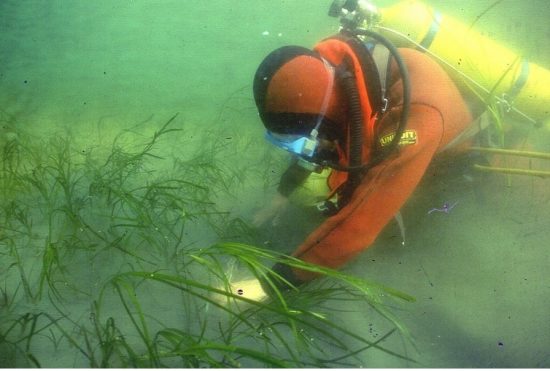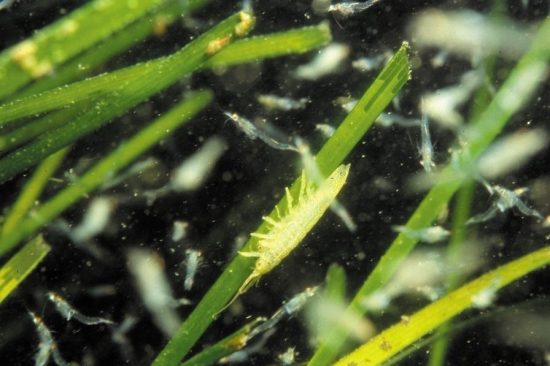



The
genome of eelgrass (Zostera marina) has been mapped out by scientists
after eight years of extensive research.
It
is the first marine flowering plant to be fully sequenced. Formerly a plant
that grew on land, its ancestors are monocots, a family that includes wheat and
ryegrass. Then, over many generations, it evolved to become a marine plant
found only underwater. As it evolved, it lost specific functions that were no
longer needed. These functions include the construction of supporting tissue
and special mechanisms to protect it against evaporation.
Similarly,
the eelgrass gained new genes which proved useful for underwater survival.
Researchers were able to identify genetic families that facilitated pollination
underwater and those that helped the plant cope with high salinity, low light
levels and altered parasitic composition. Further comparative genome analysis
indicated that the spread of eelgrass coincided with the end of the Cretaceous
Period, about 67 million years ago. This was the time when around 70 percent of
all plants and animals had died out, probably due to a meteorite crashing onto
the Earth.
Today,
marine plants like eelgrass are often perceived by many as annoying.
Nevertheless, they have a significant ecological and economic impact that is
still underestimated. Found over a range of environments from the Arctic to the
warmer waters further south, eelgrass beds serve as hatcheries for many fish,
as hiding places for juvenile fish and as homes for mussels, snails and crabs.
In addition, it also influences our environment by binding large amounts of
nutrients and carbon dioxide.
For the past eight years, a Euro-American consortium of scientists has succeeded in
mapping out the eelgrass' genome sequence. In all, 35 teams from nine countries
were involved, including those from the Universities of Groningen (The
Netherlands) and Gent (Belgium), and the GEOMAR Helmholtz Centre for Ocean
Research Kiel and the Cluster of Excellence “The Future Ocean”. Their study was
recently published in the journal Nature.
“This study shows the enormous potential of
comparative genomics and demonstrates at the same time that in the life
sciences, fundamental insights can only be achieved in large, international
teams,” said Professor Dr Thorsten Reusch from GEOMAR, one of the three
co-ordinators and co-author of the study.
Describing
the seabed as just a two-dimensional sand bottom if not for eelgrass, Professor
Dr Reusch said that it becomes a richly textured three-dimensional habitat with
the presence of eelgrass.
In
recent years, the extent of eelgrass beds has declined sharply, particularly
due to eutrophication and habitat destruction. It is also threatened by climate
warming. Professor Dr Reusche ventured to suggest that the heat-tolerant
species from the southern regions may be a genetic resource for those in the
northern regions. Hence, the newly discovered genome sequence can now provide
the basis for selecting the most suitable genomes.
 Mares
Mares 4th February 2016
4th February 2016